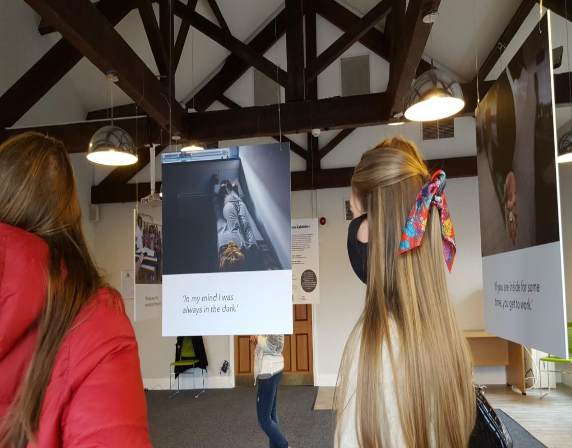‘Asylum in Art’ is a photo-voice exhibition taking the audience on an experiential tour of lived reality. Asylum in Art shines a lens on what life is like inside a British Immigration Removal Centre (IRC) and beyond release into a community in Leeds, West Yorkshire.
https://theamplificationproject.com/items/show/137 or click on the picture below
The exhibition is a photo-voice of 11 photographs visualising the primary narrative research of Maria De Angelis in photographs by Jeremy Abrahams. At its heart, photo-voice captures the tension between the institutional IRC (tasked with detaining and deporting those without papers) and the gendered, cultural, human face of detainees hidden away inside it. Using a photo-voice method, the exhibition reflects key narratives across detention experience: Amongst them – a lack of institutional legitimacy; its modern slavery typology; its carceral practices, its netting of poor people of colour; counter-conduct and belonging both within and beyond IRC walls. Due to women’s ongoing asylum claims, women did not want to feature in their own photographs. Therefore, to protect participants, all the actors are students or colleagues from Leeds Beckett University.
Asylum in Art is a collaborative project with Critical Friends from City of Sanctuary, Refugee Education Training Advice Service (RETAS); Toast-Love-Coffee café; Asmarina Voices; Hinsley Hall; and Universities Chaplaincy in Leeds. And is based on the collective experience of 15 former detainees – truly remarkable women whose generous sharing of stories has made the exhibition possible. Given that women cannot take photos inside these Centres, photographs are artistic representations of key lived moments, as narrated by women, and negotiated between women, critical friends, researcher, and photographer in the attempt to show the experience the women wished to tell. As it takes the audience on an experiential tour into the lived reality of detainees, it becomes an interactive process. Art as witness to trauma and resistance encourages all of us to think through oppressive dynamics imposed on people by the State and its institutions so we are better equipped to understand our place in asylum practices and our capacity for social change.


Comments are closed.